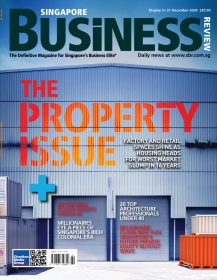
Recession risks remain despite 3Q GDP revision
Weak job markets could drag 2017 economy below 1%, says analyst.
Singapore's 3Q GDP has been revised upward to +1.1% YoY and -2% QoQ but Citi belives that risk of recession and MAS easing remain.
On a QoQ SAAR basis, the upward revision was led by manufacturing and services, though the latter continued to contract on trade-related services and financial services.
Construction was revised downwards to a QoQ contraction. Six out of nine GDP sectors saw QoQ declines, vs four in 2Q and 1Q.
By expenditure, GFCF and changes in inventories respectively shaved 0.3%-pts and 2.3%-pts to YoY growth in total demand, which fell 0.2% YoY (2Q:+2.1%). Growth slowed to 1.7%YoY and -0.6% QoQ SAAR in 1Q-3Q16, from 2.0%YoY (and QoQ SAAR) in 2015.
The Ministry of Trade and Industries (MTI) narrows 2016 forecast to 1-1.5% from 1-2% while Citi sees 2017 growth at 1-3%.
MTI expects Singapore’s growth to remain “modest” for the rest of 2016. For 2017, global growth is expected to pick up “slightly”, lifting manufacturing and tourism, even as infocomm and other services remain supportive.
With the latest revisions, Citi notes that the lower end of MTI’s 2016 forecast range (1%) could imply 4Q technical recession, with a 1.4-2.5%QoQ SAAR contraction in 4Q.
"Assuming 2016 growth at the mid-point of official forecasts (implying 4Q growth picks up to +1.8%QoQ SAAR), average QoQ SAAR growth would have to pick up to 1.4% for 2017 growth to reach 1%," it said.
The research house said that this looks plausible on an expected pick-up in global growth, alongside a 0.9%QoQ SA rise in the official composite leading indicators (CL)I in 3Q.
Even so, Citi remain cautious and see risks to forecasts skewed to the downside.
"The 1.5%QoQ SA jump in the CLI in 2Q failed to anticipate the GDP contraction in 3Q, while other indicators such as NODX, NORX, transport and surveys of business expectations suggest that weakness persisted into 4Q. A 4Q technical recession cannot be ruled out," it said.
According to Citi, should this materialize alongside further net job losses, risk of a downward re-centring would rise, with possibility of a Jan inter-meeting move.
For 2017, Citi remains wary of competitiveness drags on exports, tighter credit conditions for companies, and a weakening jobs market weighing on household balance sheets, which could bring growth below 1%.
























 Advertise
Advertise






